We tell about the designs of interroom partitions, materials, on the legal aspects of their construction and advise how to prevent errors when installing.
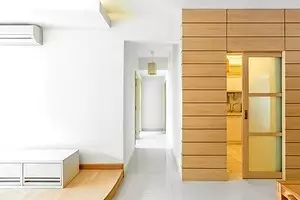
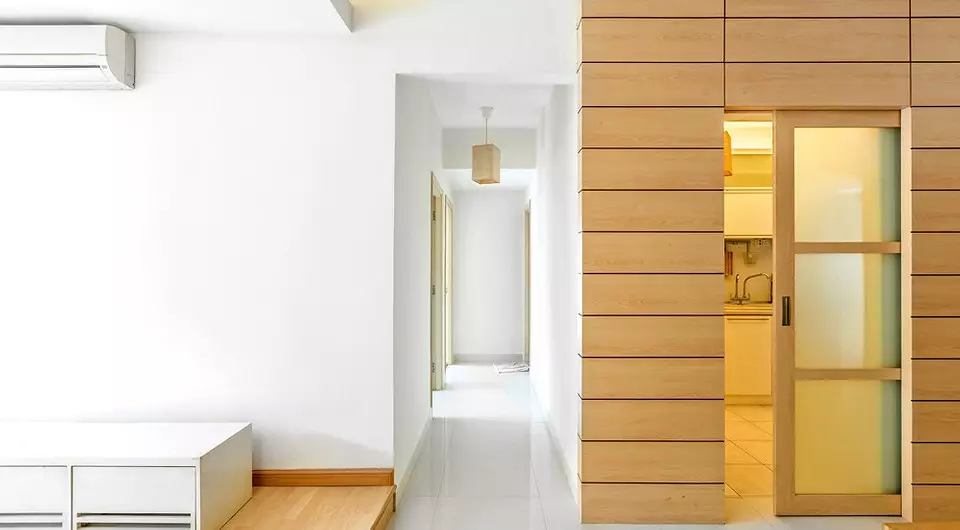
It is often necessary to build interior partitions in the repair of typical housing, because sometimes "moving" a non-vacant wall is only 20-50 cm, you can noticeably improve the ergonomics of the apartment.
Interior partitions and their features
By type of construction- Masonry
- Frames
- Sliding
- With pocket for sliding door
By material
- Brick
- Concrete
- From puzzle gypsum plates
- Potted ceramic
- Plasterboard
Legal aspects of redevelopment
How to prevent errors
By type of construction
Masonry
Masonry partitions are erected from building blocks and bricks. Choosing the material Consider the permissible load on intergenerational floors. For overlaps from precast concrete slabs, which are used in most urban homes, permissible loads are 400-800 kgf / m².In the case of the use of empty, invoked and other light construction blocks, the mass does not reach the limit. But the possibility of using brick masonry will have to clarify in the housing inspection bodies. The fact is that brick walls are obtained too hard - about 550 kg per meter of length when laying in the Polkirpich. Together with the tie of the floor, they can have unacceptable loads on overlap.
Strength
The main condition of reliability is the right reinforcement.
Each second row of foam concrete blocks is strengthened with rods with a diameter of 8 mm. They are laid in stages, and vertically blocks bind to galvanized steel plates, located in 100-120 cm increments.
The masonry of full-scale puzzle plaster plates is reinforced with plates and corners, from hollow - corners and vertical reinforcement rods.
You can not reinstate the design of the paired blocks, but the builders are usually enhanced by its vertical rods. The design will be attached to the adjacent walls and the plate of the uppermost overlap. For this, reinforcement pins, plates or staples made of steel thickness of at least 2 mm. The mounting step to the walls should not exceed 500 mm, to the overlap - 1,200 mm.

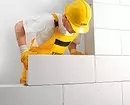
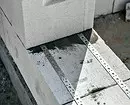
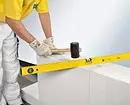
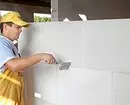

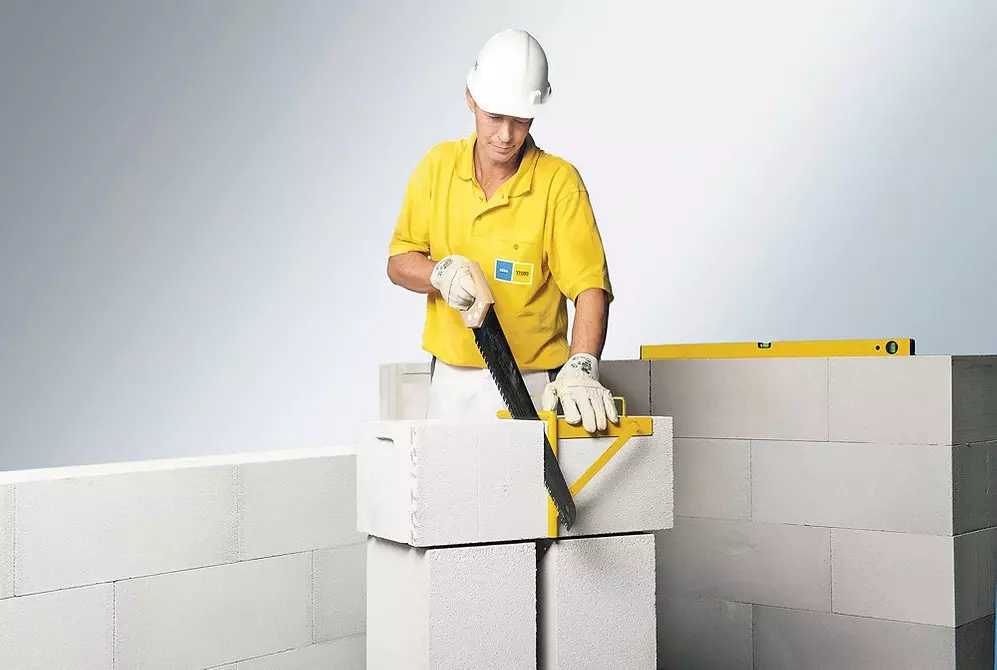
The construction technology of partitions from gas-silicate blocks is worked out to the smallest detail. For cutting blocks, use a special saw and a modified stub. Photo: ytong.
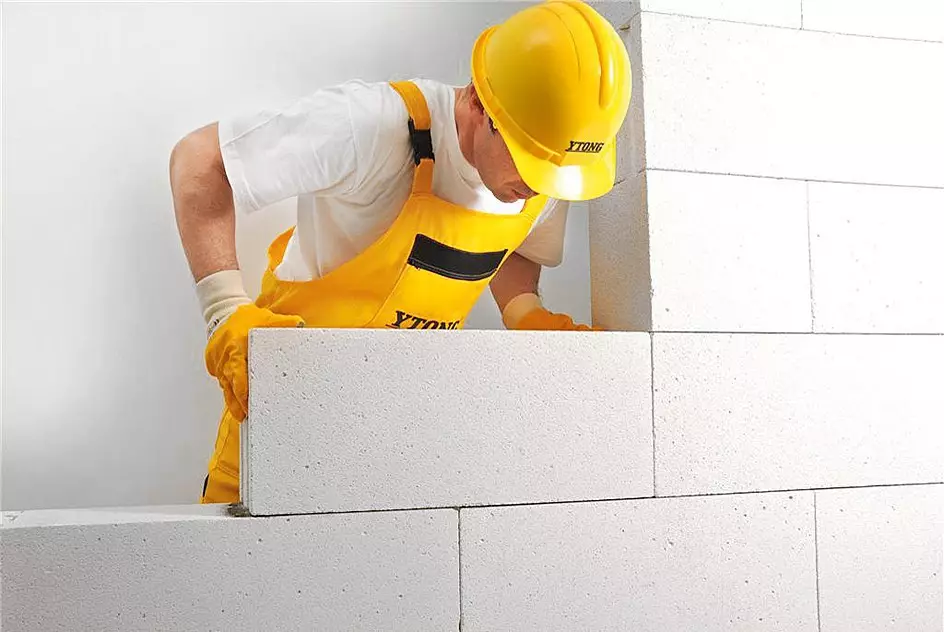
The masonry is carried out on thin layer glue. Photo: ytong.
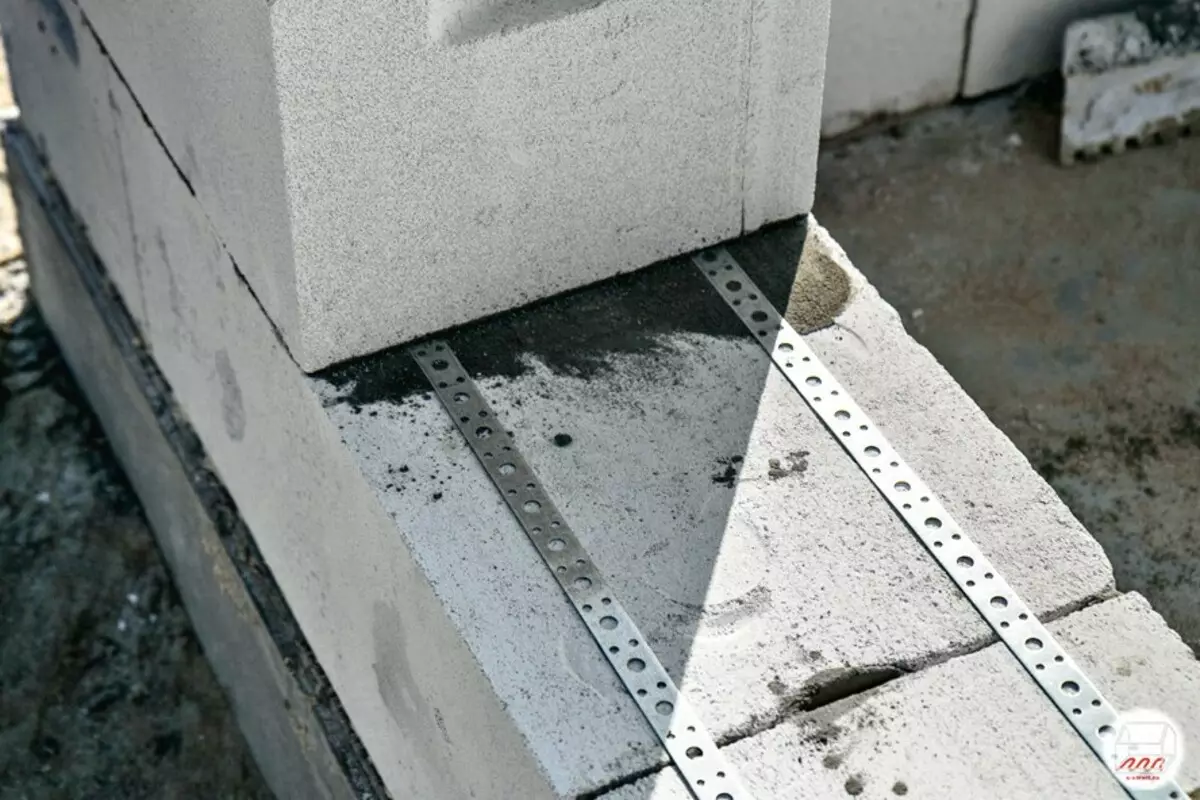
Reinforcing it with plates. Photo: ytong.
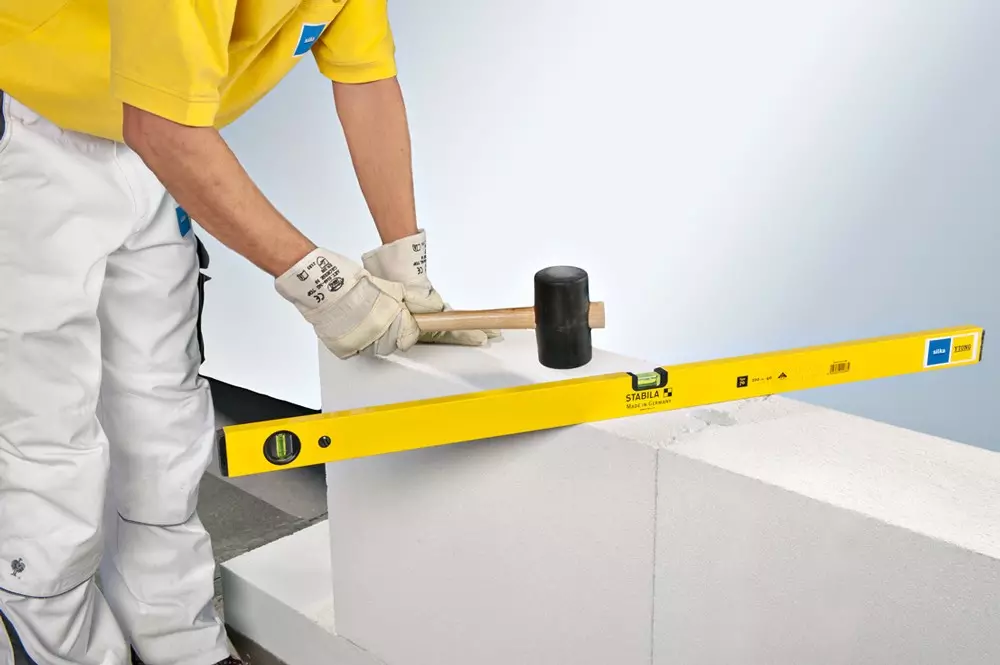
Thanks to this, the ranks are very easily aligned. Photo: ytong.
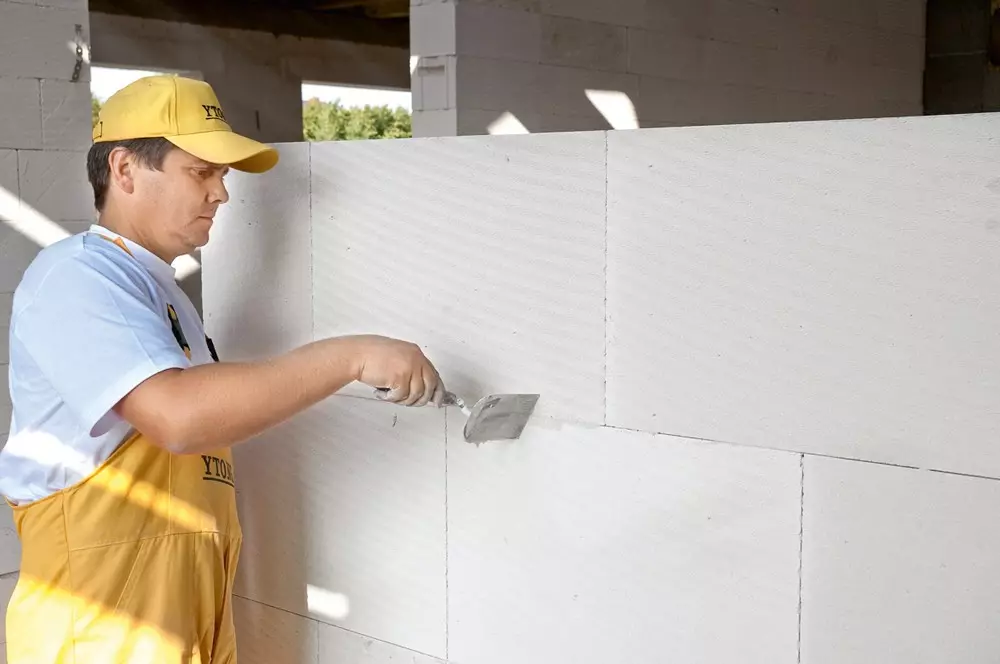
The solution protruding from the seams is immediately removed to the cells to alleviate shocking. Photo: ytong.
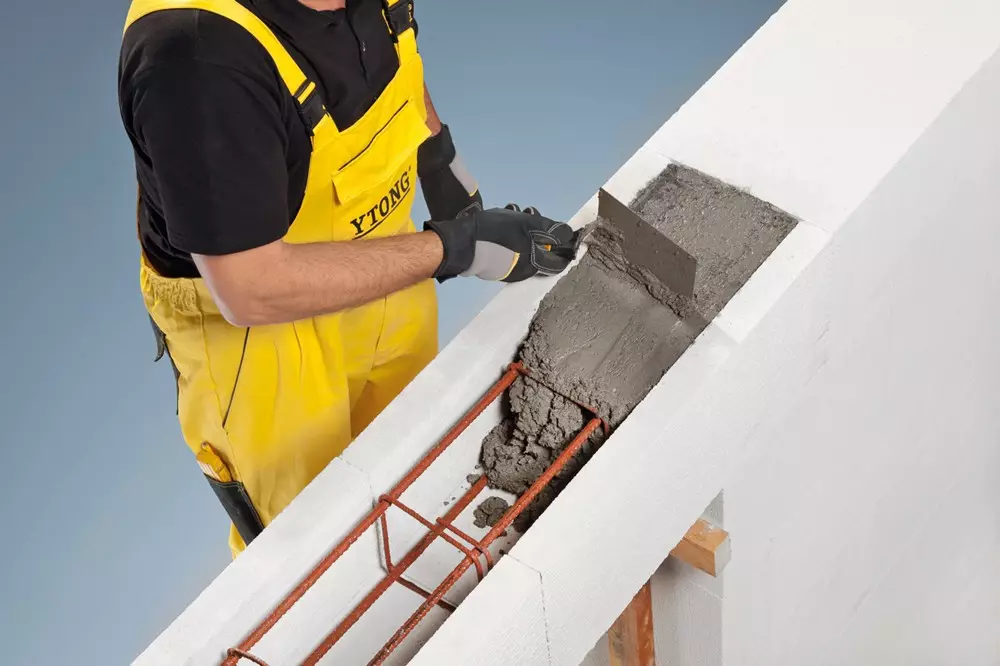
Jumpers over the proof are performed using tray elements. Photo: ytong.
Soundproofing
An important requirement for the new wall is a soundproofing ability. Minimum air noise insulation index RW - 43 dB. That is, because of them should not have a calm speech. The RW index is placed on two sides of the wall thickness in the Pollipich is 47 dB, a foam block thickness of 200 mm - 44 dB. But in practice, she usually strives to do thinner. In this case, it will help the sheathing of drywall on the shelter, between the racks of which there are noise absorbing mats that provide additional sound insulation up to 10 dB.
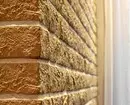

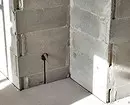
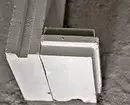
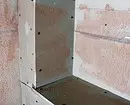
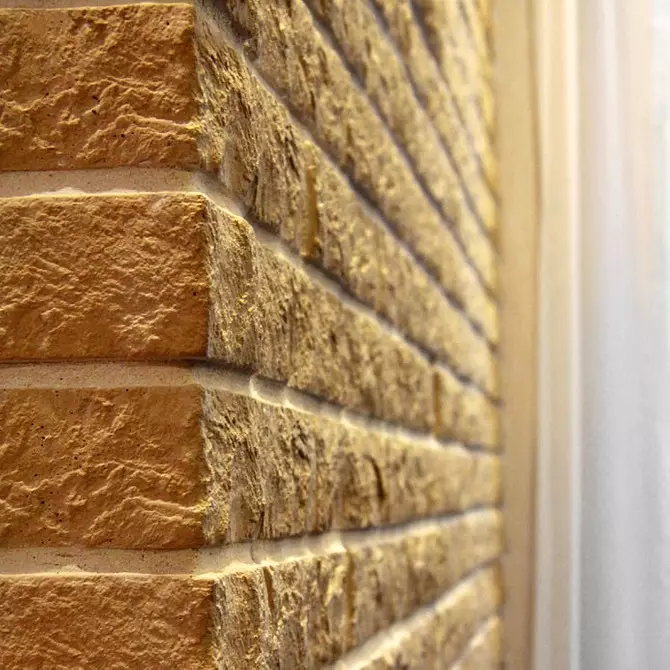
The partition of a light frame structure is finished with decorative brick "Alaten Brick" (White Hills) beige shade, angular M-shaped elements are successfully imitated by natural brickwork
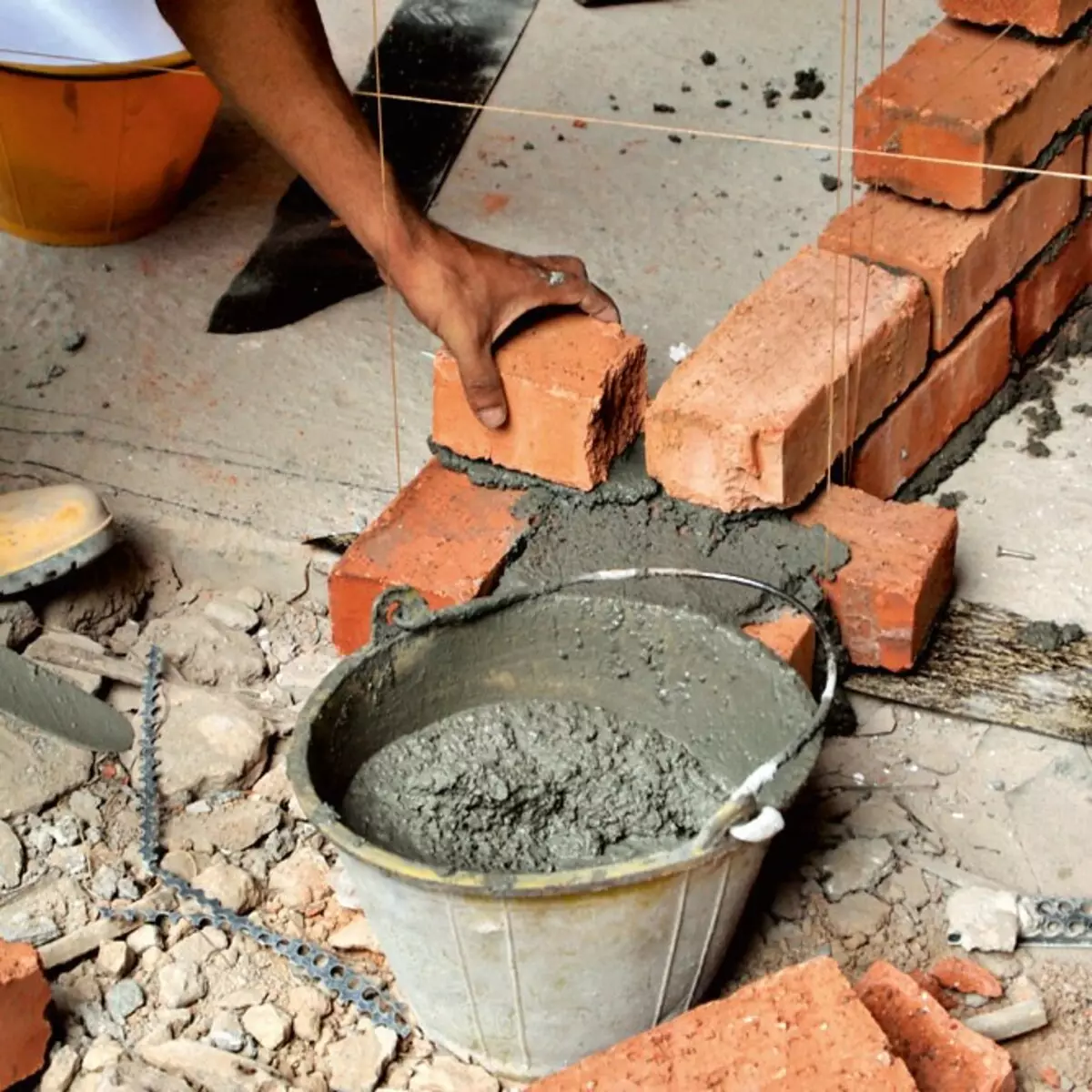
Labor-intensive construction partition in Polkirpich
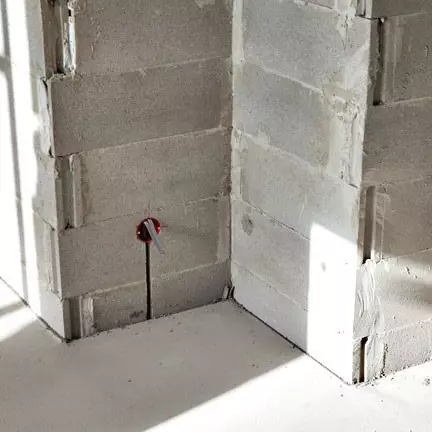
Puzzle Blocks Partition
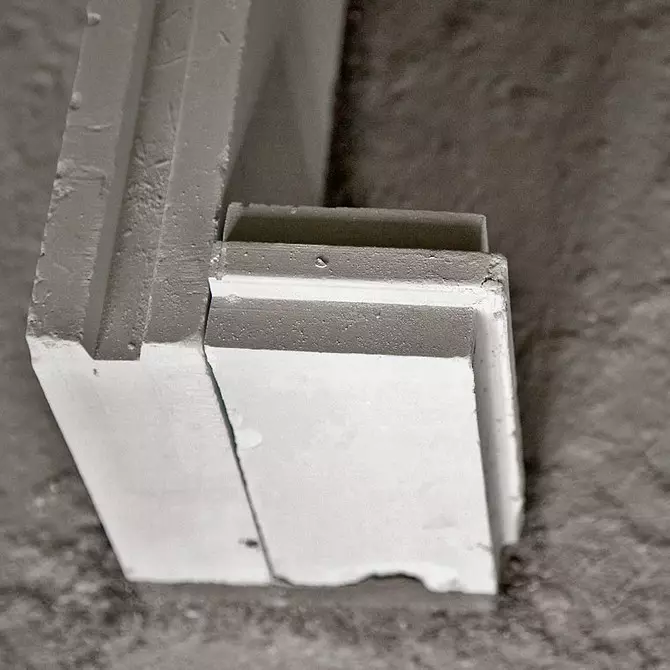
Reliability of angular compounds in block partitions is achieved by dressing seams,
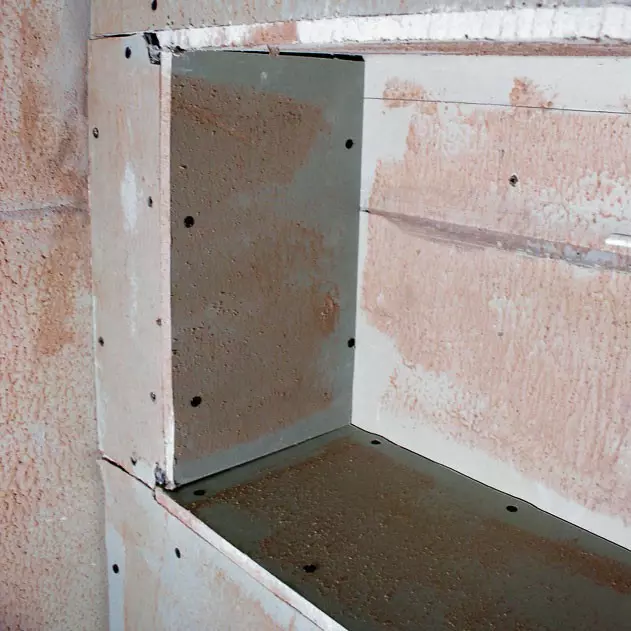
In the framework - by enhancing a metal profile
The design can be transferred to the room structural noise from overlaps. So that this does not occur, under the base or bed seams laid fine-layer vibrational material. The space between the top near the bricks or blocks and the tip of the upper overlap must be filled with polyurethane foam. In addition, the quality of masonry - cavity and even microcracks in the seams and places of adjoining can significantly reduce the index of air noise insulation.
Finally, to achieve good sound insulation, you need to choose correctly and install the door:
- Frame or fraumuga with a conventional single glass will worsen this parameter by 5-7 dB;
- The clearance under the 20 mm web value is approximately 8 dB;
- Shift door without side and upper brush seals - more than 10 dB.
Masonry Rules
The masonry should rely directly on the slab overlap. It should be erected to the device of the floor screed, and in the future, in the place of adjustment of the screed to the partition, install damping gaskets. As an extreme case, installing from cellular blocks with a support for a fully dried cement-sand or clay-concrete tie. But only if there is no layer of noise absorbing mats or polymer membranes.Preparation of the foundation
The masonry partition creates a significant load on the overlap - it may not withstand the pressure and put. That this does not happen, over the slab overlapping along the construction line, the monolithic reinforced concrete base is taking a height of at least 100 mm. The masonry starts when it gains at least 70% of strength - 2 weeks after the fill of concrete.
Cocol
The base performs the function of the ribbon rib: it enhances the stove and shifts the load to the zones of its support on the bearing walls or columns. Without this item, it is possible to do only if the overlap has a large margin of safety - then the masonry lead in bed seam. Specialists advise to put under the base or the first row of masonry damper tape, which compensates for shrinkage deformations and block the path of structural noise.
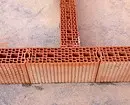
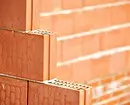

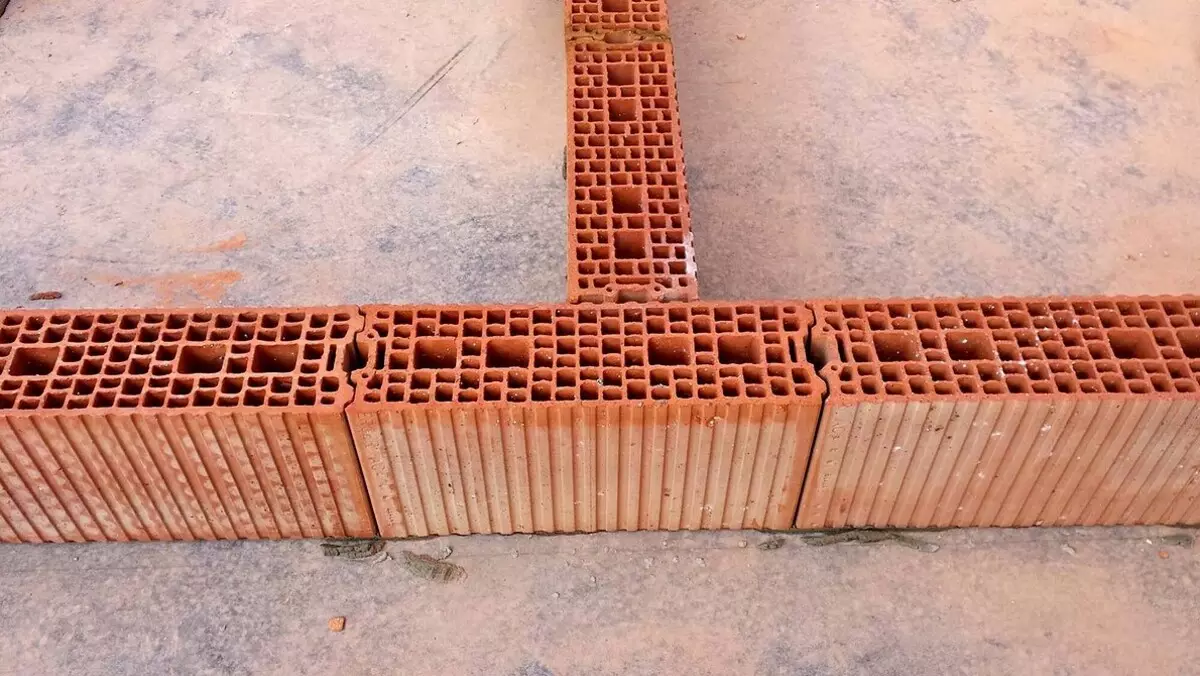
When laying from the paired ceramic blocks, the optimal thickness of horizontal seams is 12 mm, the vertical seams do not fill with the solution
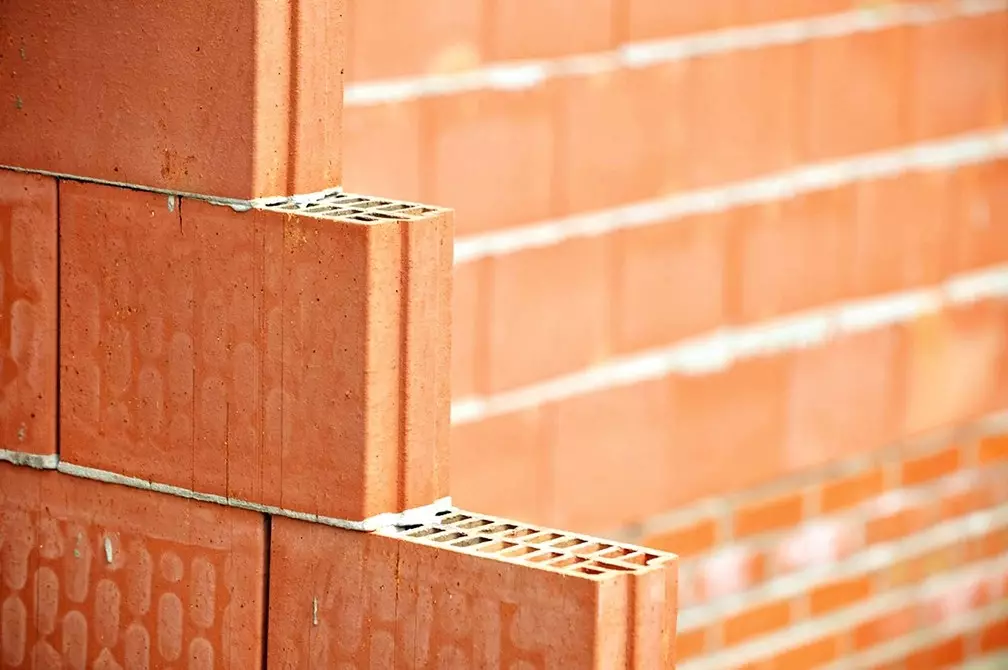
The magnitude of the dressing of the seams must be at least 125 mm
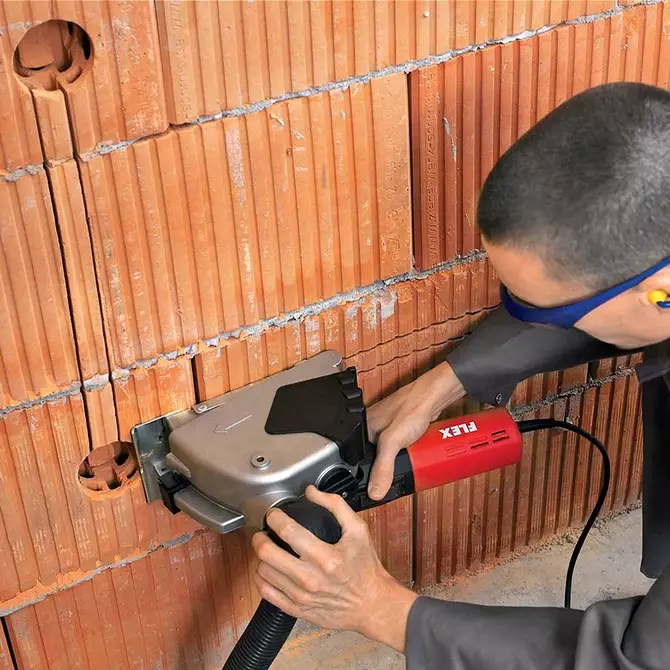
Streets under electrical wiring it is better to do with a special tool
Masonry solution
It is advisable to purchase the finished adhesive mixture recommended by the manufacturer of selected blocks or plates. The composition of such a mixture includes sealing sedels and plasticizers. Thanks to this, it is easier to lead the masonry, the ranks are obtained even, and the seams are solid, which has a positive effect on the strength and soundproofing ability.Reinforcement
Any partition is fixed to capital walls and ceiling by reinforcement pins, depending on the thickness and density of the material used. Puzzle gypsum plates fasten perforated corners vertically. The walls from the invoked ceramic or ceramzite-concrete blocks are reinforced by vertical mortgages.
The gap between the lower surface of the overlap and the top should not exceed 40 mm. This gap is often filled with polyurethane foam, but it is better to use cement glue.
Emmers
The openings are desirable to make standard sizes so that there are no difficulties with the installation of doors. The upper jumpers can be made from reinforcement rods, corners or reinforced blocks. With a thickness of less than 100 mm, a vertical gain of openings by reinforcing rods, stripes or corners is required.
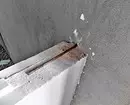
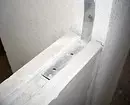
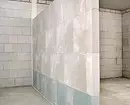
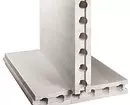
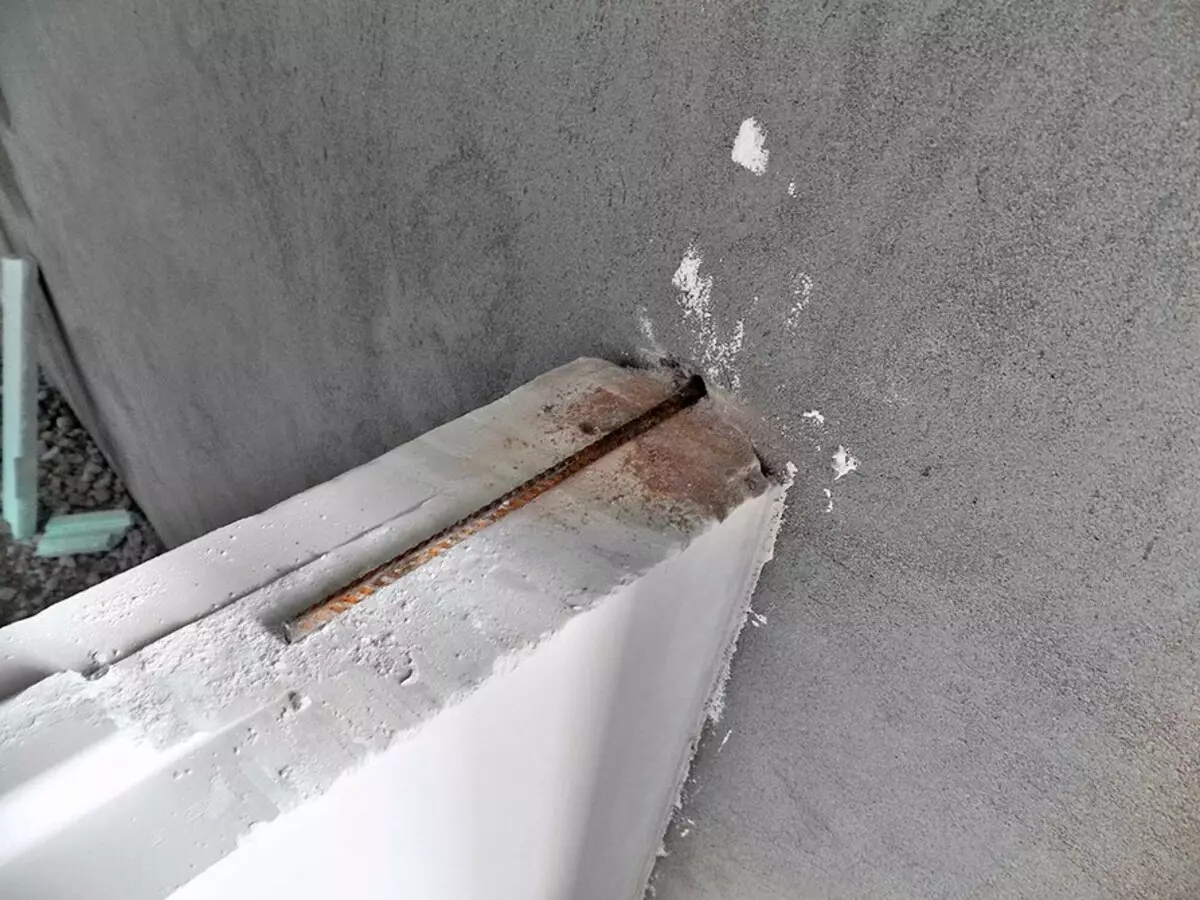
Locking pin requires an increase in the thickness of the seam
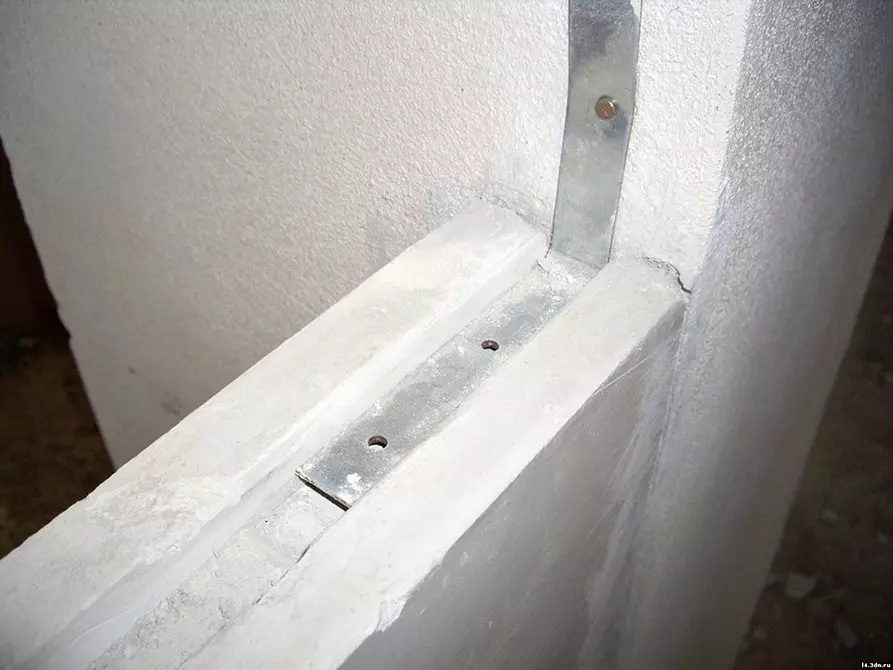
It is better to use a plate
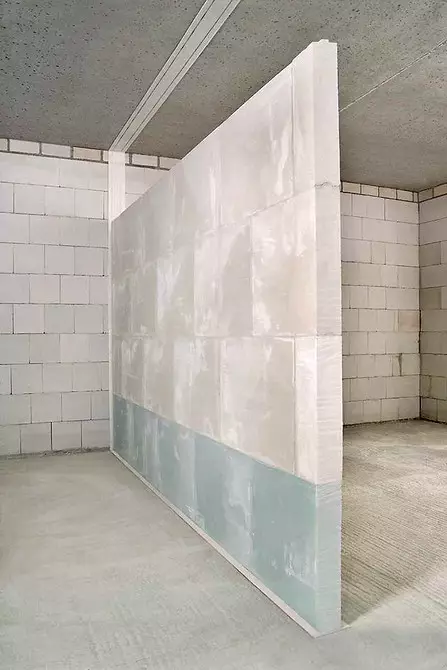
From moisture-proof PGP you can add only the first row
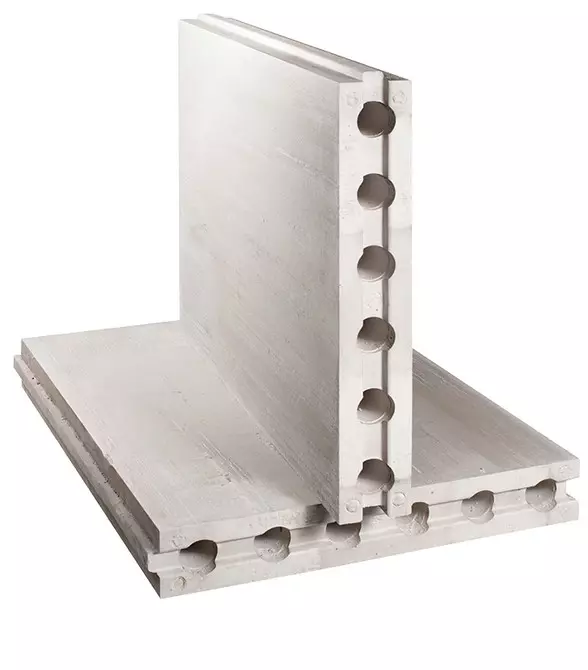
Next use ordinary plates
Frames
With framework technology, you can build internal structures of any form. As a frame, a metallic profile is most often used, and as a sheat - plasterboard. Inside such a wall put a soundproofing barrier from mineral wool. For hanging shelves or mirrors in the framework include mortgage parts.Niche is made by the same technology, but their minimum size is limited to the possibility of twisting self-tapping screws during installation. The bases of wide shelves or niches are enhanced by the guide profile, performing the jumper from it. To improve the strength and index of air noise isolation, the frame is made double.
When erecting internal structures, it is worth a preference to those materials that do not require alignment: plaster puzzle plates or plasterboard. Watching surfaces with alignment under the finishing finish, especially under painting, increases the cost of repair and refers to dirty construction processes.
Soundproofing frame partition
Use special sound-absorbing materials to fill emptiness. This will ensure air noise insulation index in the range of 44-46 dB.
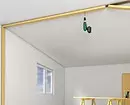
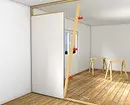
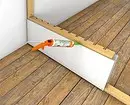
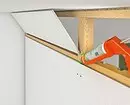
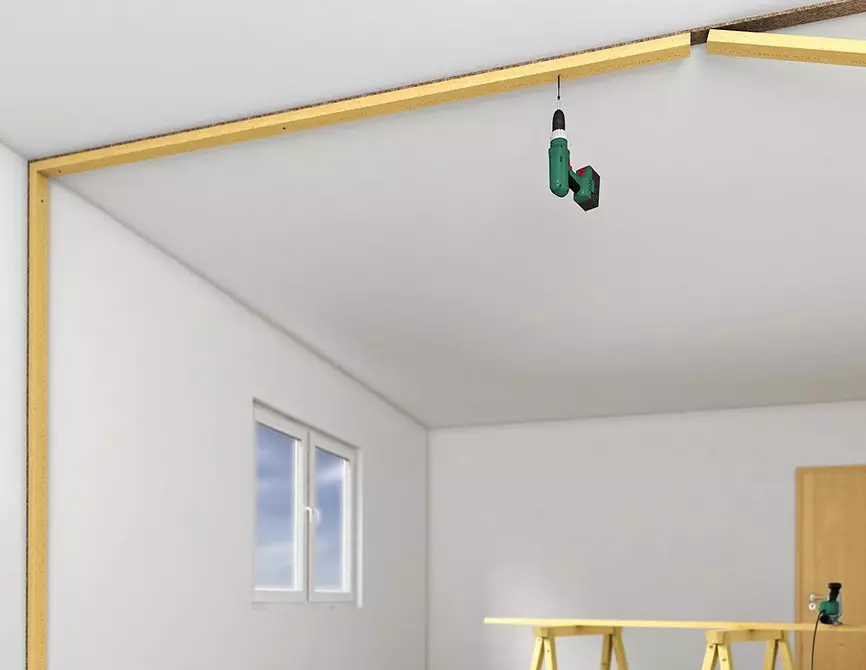
When installing acoustic plasterboard partitions, a frame of solid or glue bars is used. First to the floor, walls and ceiling fasten the strapping, paving between the bars and the base surfaces of the tape from the cork agglomerate. Photo: Xella
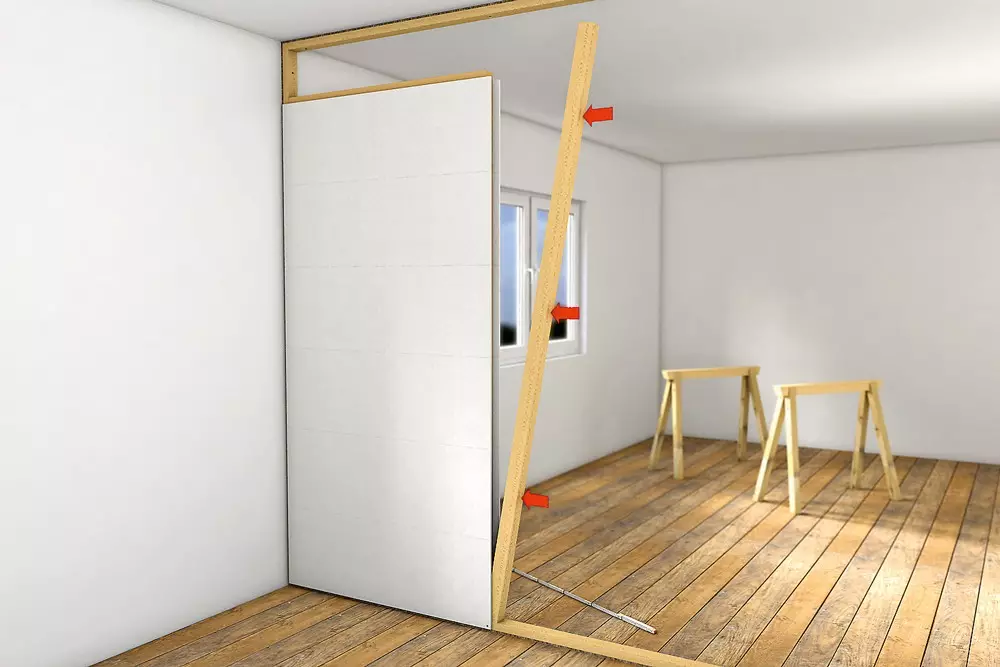
The racks are mounted by versions between the straining bars, fixing screws. Photo: Xella
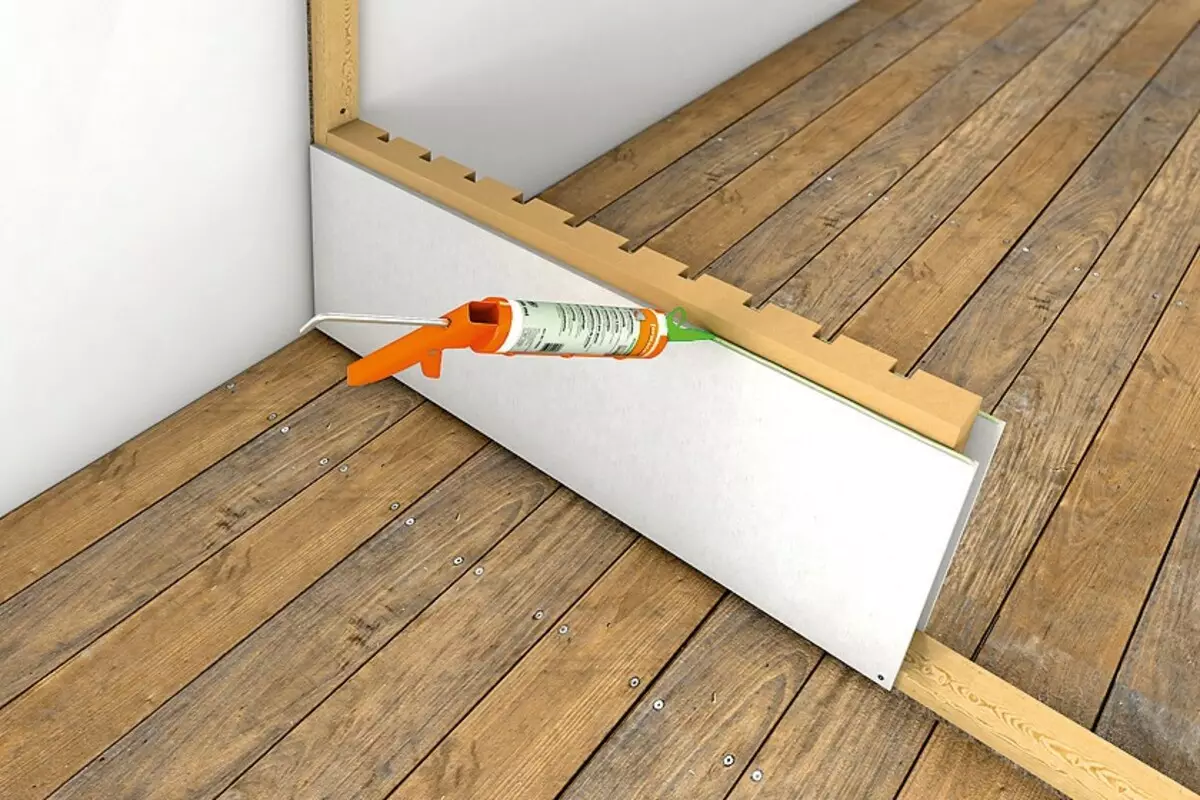
The frame is enhanced with horizontal jumpers. Photo: Xella
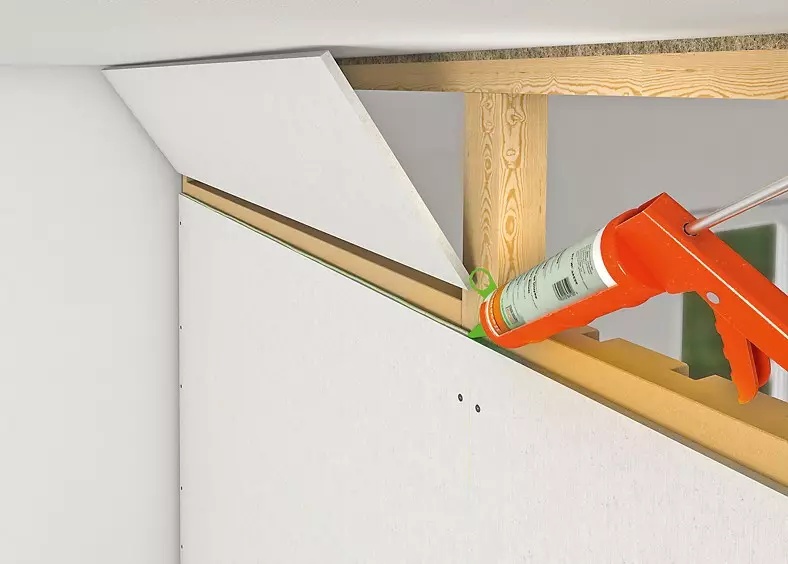
The joints of the skin and frame, as well as drywall sheets with each other, are sealing with unshaking acoustic sealant. Photo: Xella
To achieve a higher level of sound insulation allows the lining on each side with two layers of drywall, between which the technical cork sheet is paved. The highest indicators have a partition on a double-spaced frame, but its minimum thickness is 135 mm.
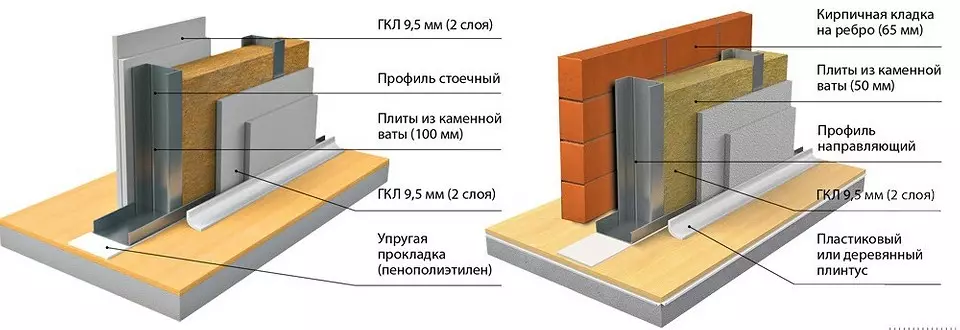
Options for the design of interroom partitions with filling with noise absorbing plates
Sliding
Sliding interroom partitions are the easiest installation option. For their installation, we do not need redevelopment and construction work, the installation is going fast. There are disadvantages: they do not help improve sound insulation, in strength inferior to other options.Types of sliding interior partitions:
- with rail mechanism on the floor and ceiling;
- Without a threshold - fastening only to the ceiling;
- folding - door-harmonica;
- Inclined sliding - they need to take them away from themselves and then move to the side.
The most frequent material for them becomes glass and wood. Glass visually do not overload space, but require regular cleaning, not suitable for repair. Woods more often use in decorative purposes, for visual zoning room.
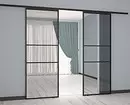
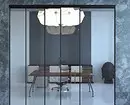
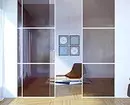
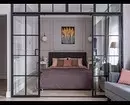
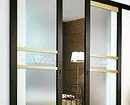
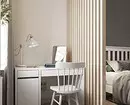
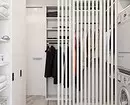
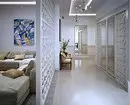
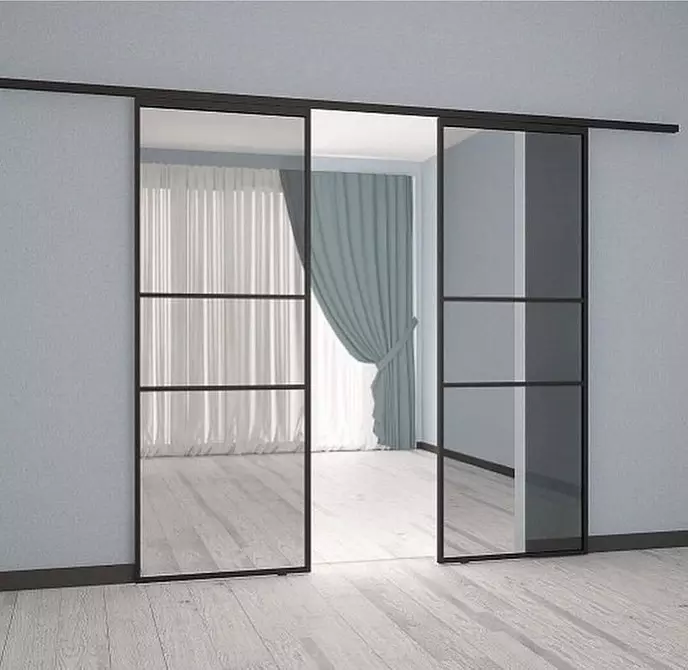
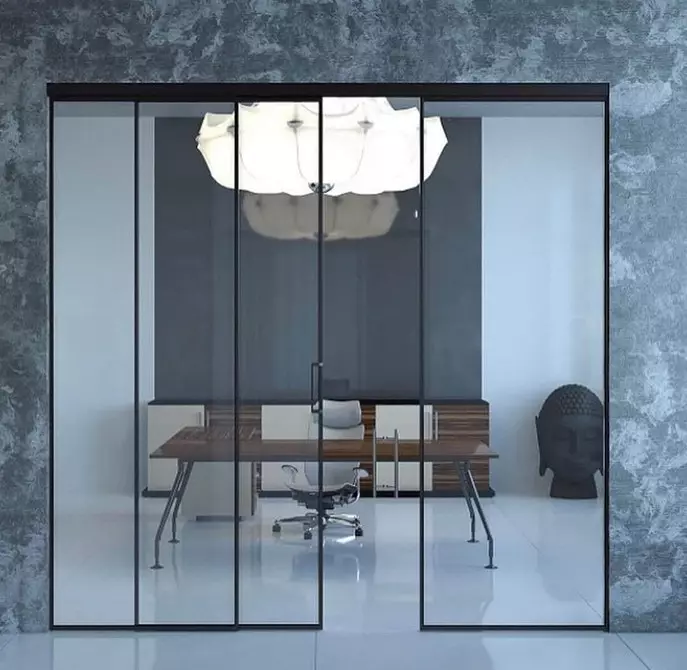
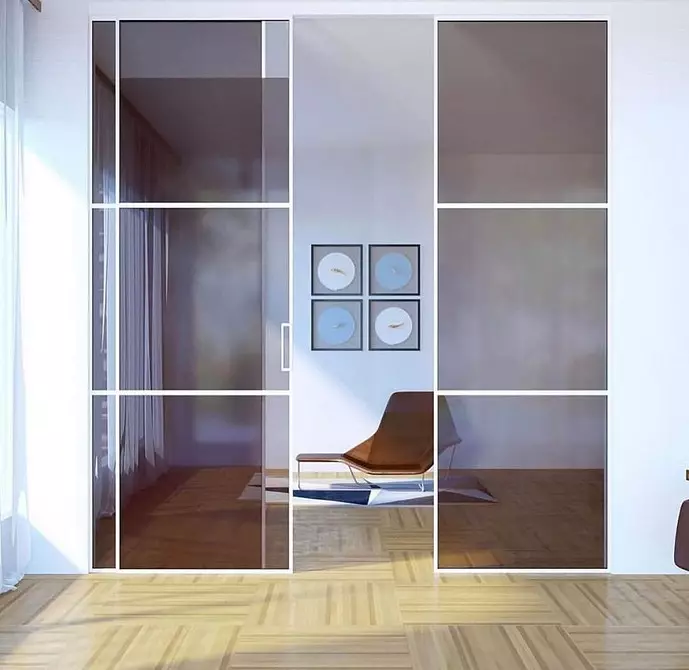
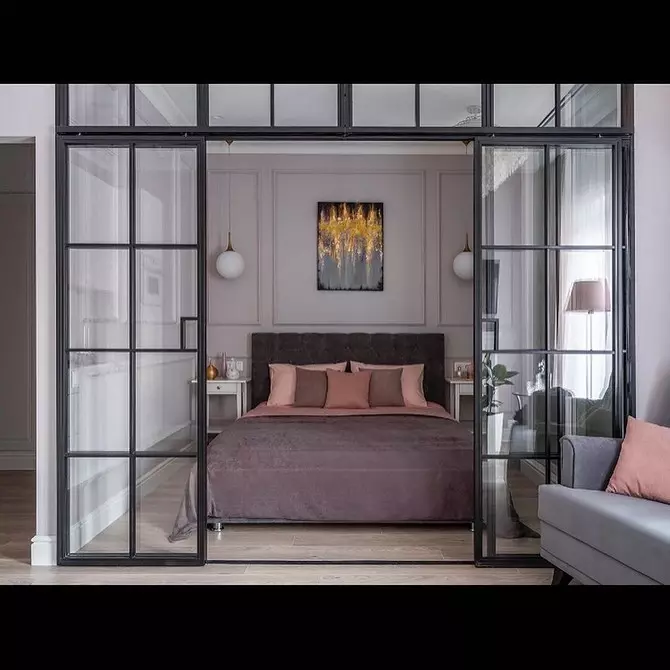
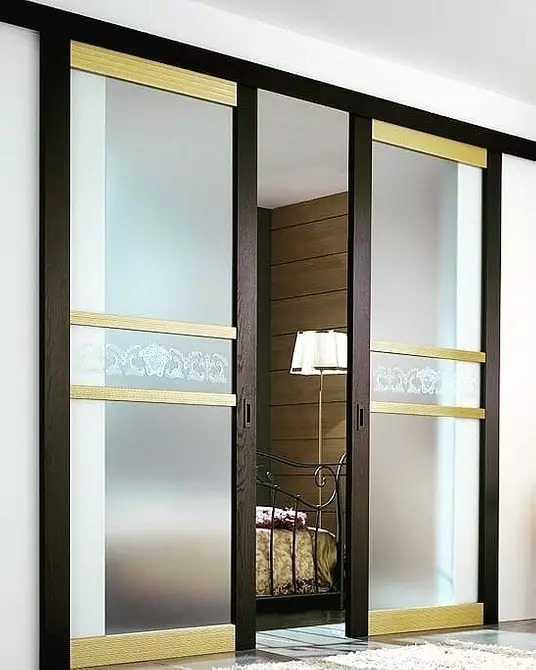
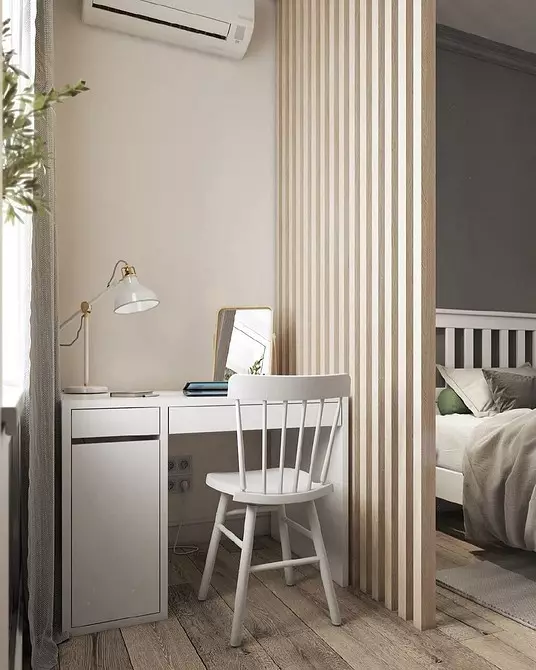
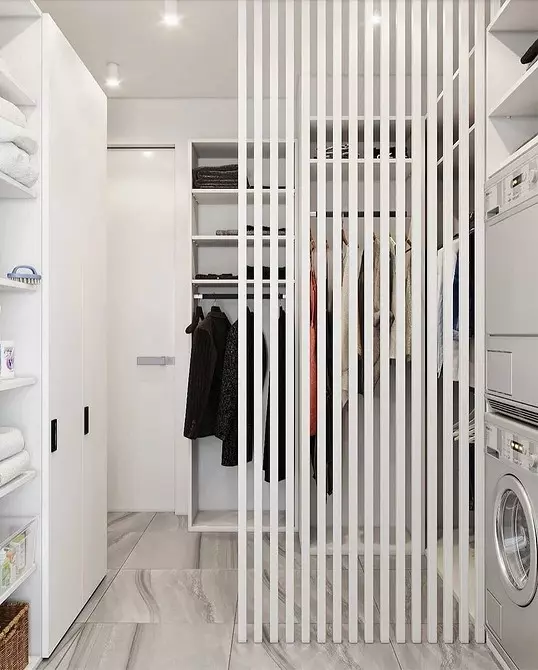
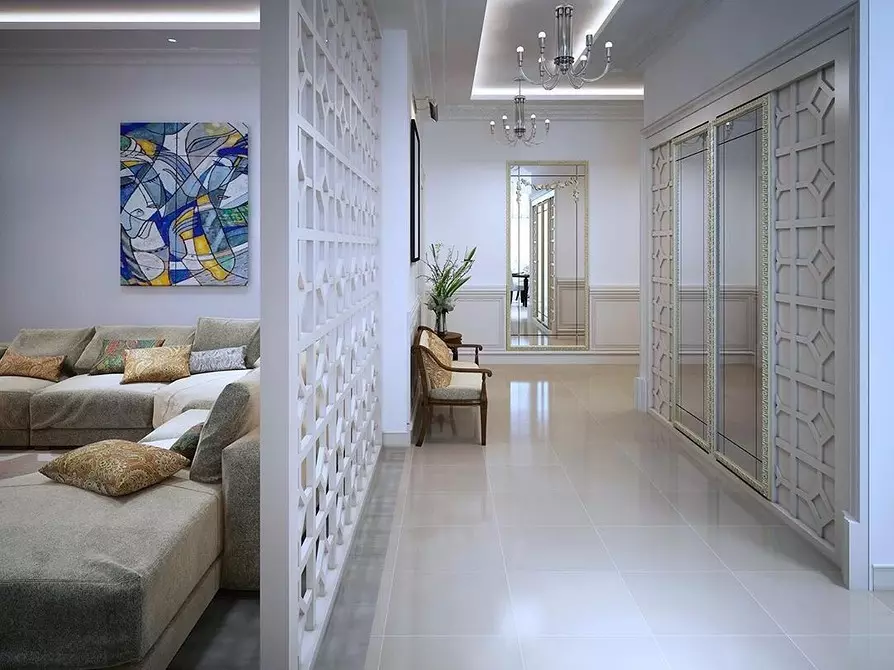
With pocket for sliding door
If you need to make constructions thinner, use ready-made penalties for sliding doors as the base. The thickness of the design taking into account the plasterboard does not exceed 125 mm. The partition with a frame from ordinary P-shaped profiles will cost 1.5-2 times cheaper, but it cannot be done thinner 170 mm.
The hollow frame walls are badly isolated sound, so when the bedroom improvement, it is better to use structures consisting of a masonry partition with a thickness of 80 mm and embeddered frame foam.
By material
Brick
The possibility of conducting brickwork will have to clarify in the housing inspection bodies. Brick options are obtained too hard - about 550 kg per meter of length when laying in Polkirpich. Together with the tie of the floor, they can have unacceptable loads on overlap.
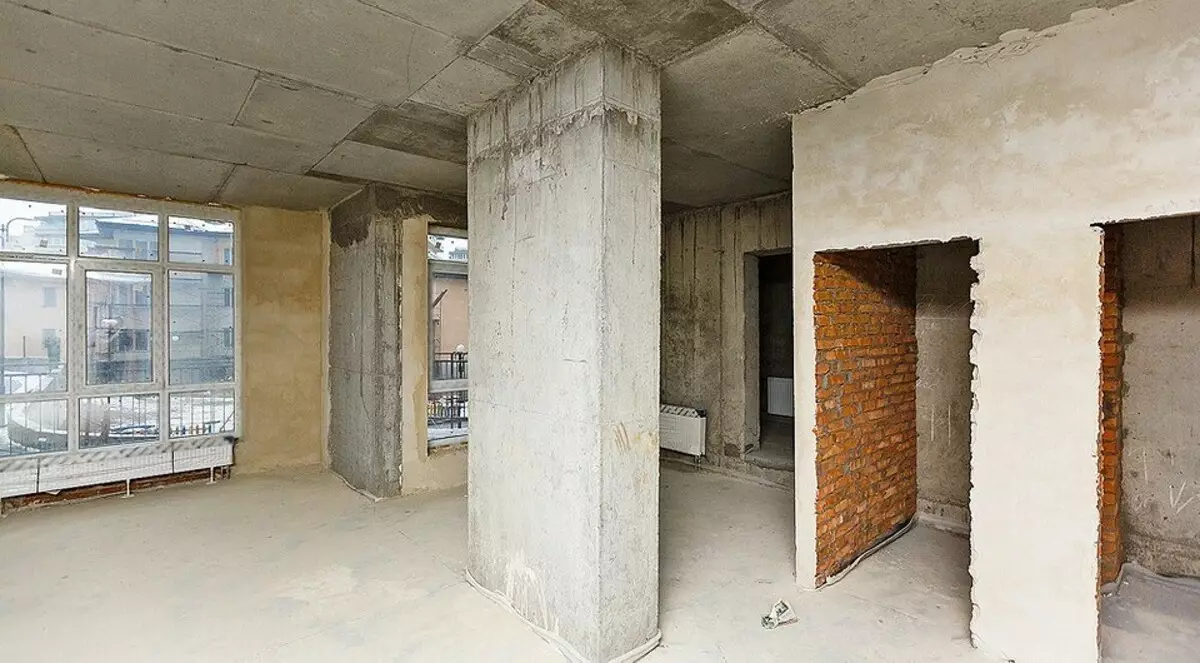
In homes with monolithic iron-concrete floors, brick partitions can be built.
In addition to the essential loads on interolation floors, the laying of brick walls is associated with serious time costs, requires professional skills.
If you want to create an interior in the Loft style, then imitation under the brick niche can be created using a block or frame design with a tile under the brick. The angular elements of artificial stone will allow to achieve a complete illusion of brickwork thickness or natural stone.
Concrete
For construction, foam blocks are foam blocks with a density of 600-800 kg / m³, 80-100 mm thick. A smaller thickness is insufficient in terms of sound insulation and resistance to console loads. However, the walls of foam blocks require shuttering. For this reason, it will be difficult to create a small decorative niche, as it will have to cut blocks for size, placing the surface.
Ceramzit concrete partitioned blocks of moisture resistant and durable, but do not differ in the stability of geometric sizes. Only professionals make such a masonry, and in any case there will have to equalize the surface with rather thick plaster layers.
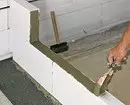

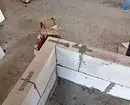

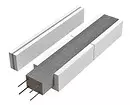
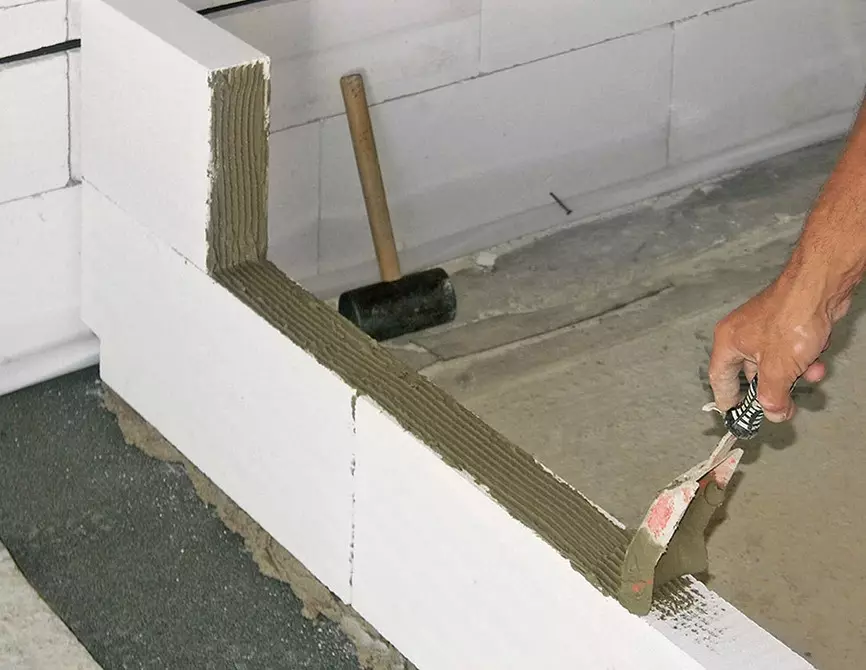
When laying from cellular blocks, the solution is better to apply a special spatula
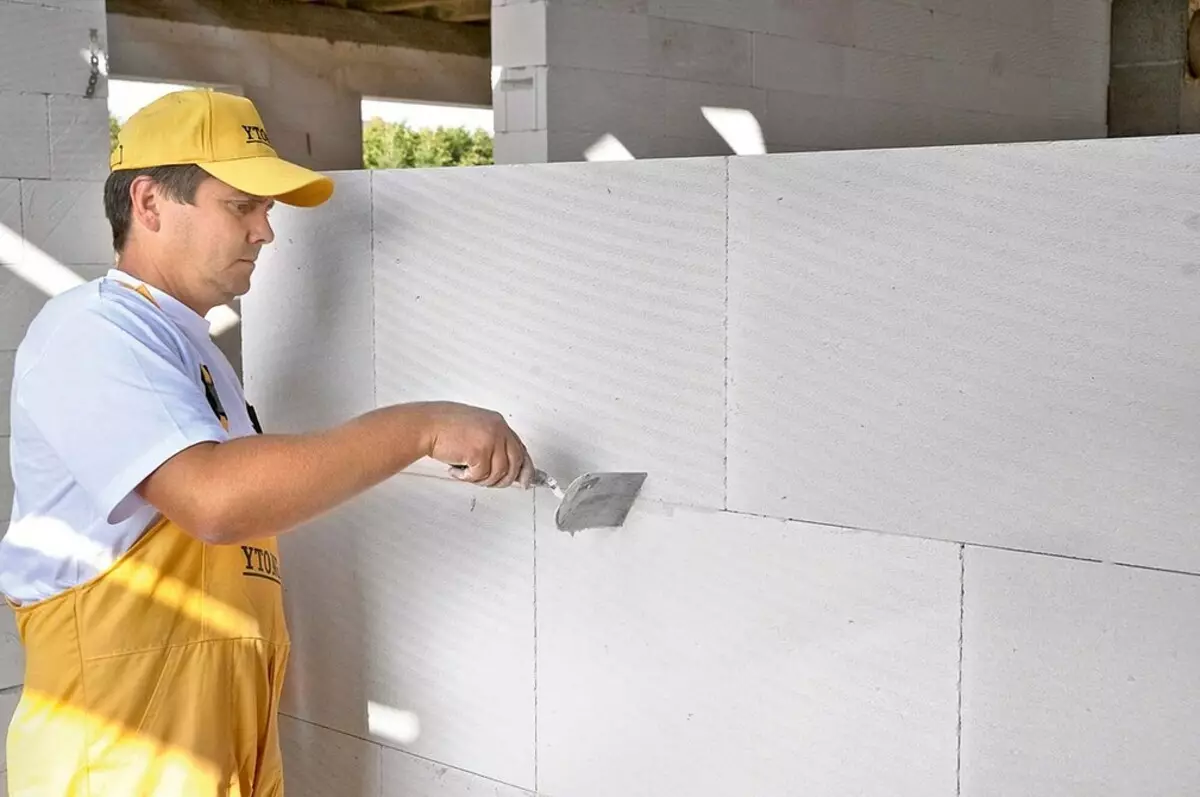
Sprompting by taking speaking surplus
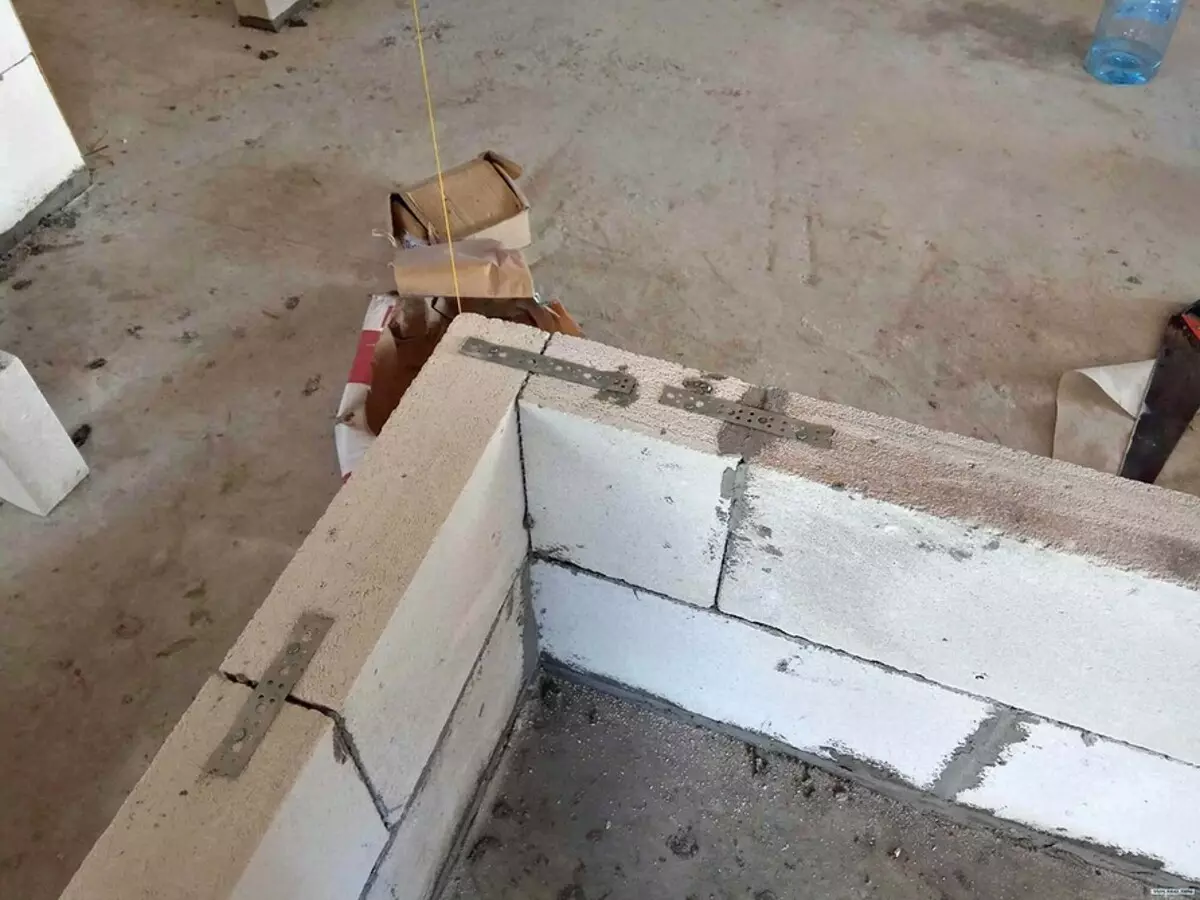
Blocks bond with each other and with overhaul steel plates and corners
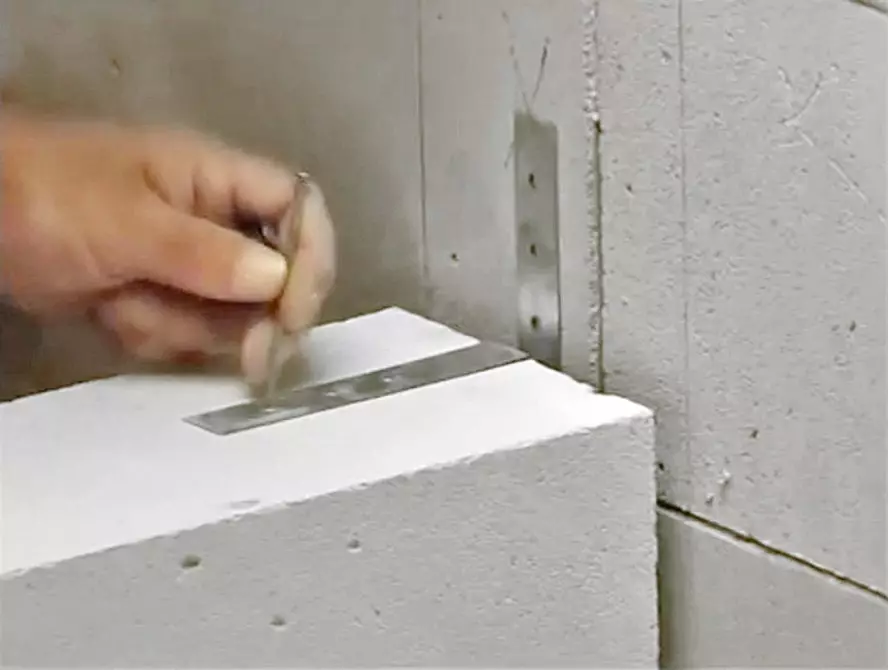
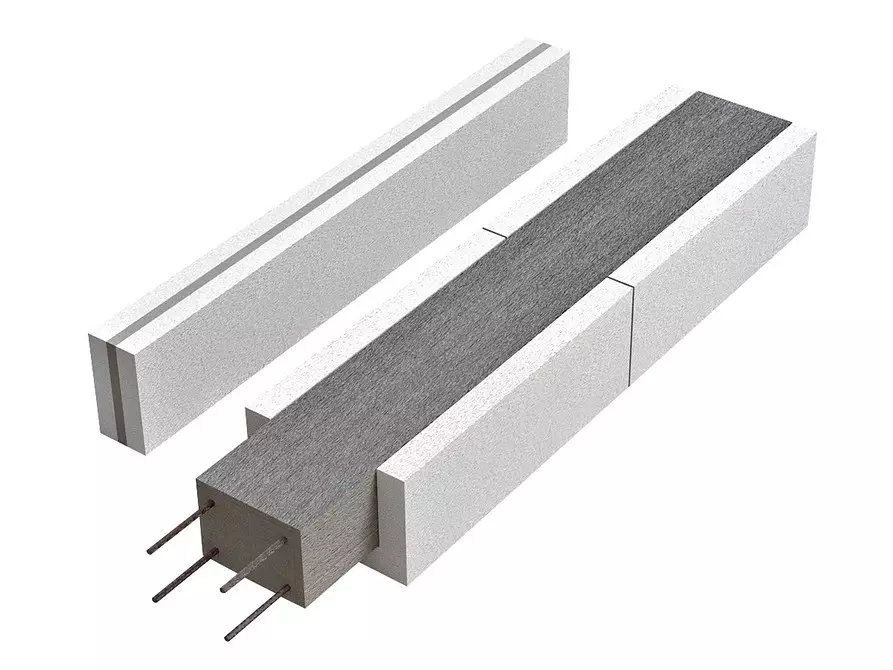
Pleasions break - enhanced beams
From puzzle gypsum plates
Plasolite puzzle plates are larger than foam blocks, but you can create decorative niches with them. Due to the conjunction of the groove comb, the design is distinguished by stability. Reinforcement they are not required, only anchoring to the walls and amplification of angles with plastering corners of galvanized steel. Minus material is that it is difficult to dive. Therefore, when appropriating in size, it is necessary to remove grooves and ridges, and then enhance the masonry by reinforcement rods or plates. But the walls of foam blocks pass steam, that is, breathe. Moreover, the gypsum contains water and acts as a regulator of a humid regime in rooms with normal humidity.
Puzzle gypsum plates weigh significantly more than concrete blocks, so it is suitable only for houses, the overlap of which is designed for a distributed load of more than 800 kg / m2.
Another drawback is high elasticity. Because of it, a drum effect appears - a relatively low sound insulation level at 100-200 Hz frequencies.
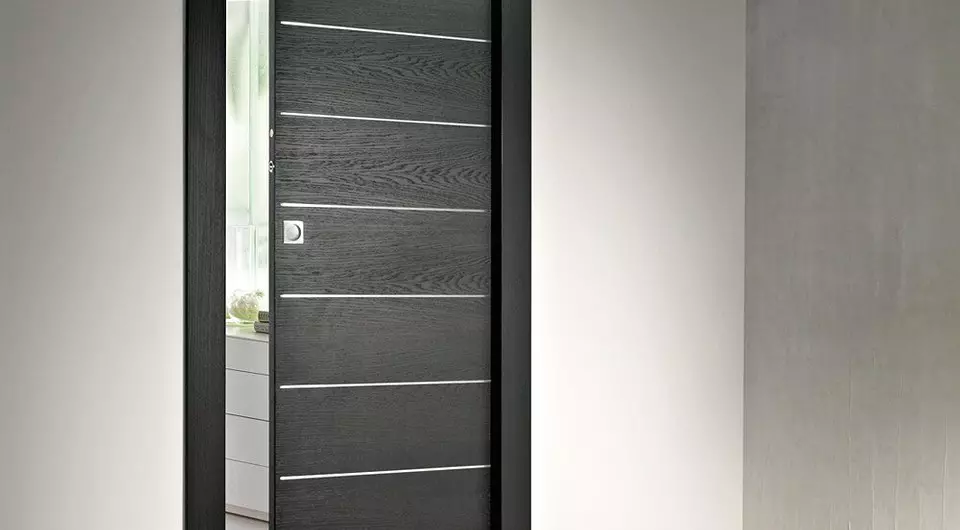
Partitions with a pocket for a sliding door are usually performed from drywall. It may be the factory penalty from the special sections profiles. The design provides the ability to adjust the canvas in height.
Potted ceramic
Personal ceramic blocks are 2-2.5 times lighter than bricks and at the same time hold fasteners well. If you use chemical anchors, then on the wall with a thickness of 130 mm, you can mount even a paddle plumbing.
A large format of blocks accelerates the masonry, grooves and ridges on the side ends strengthen the partition, and the ribbed surface provides reliable grip with the layer of plaster.
The disadvantages of the invoked blocks include relatively high water absorption. It is possible to solve this problem with the help of hydrophobic primer and cement plaster.
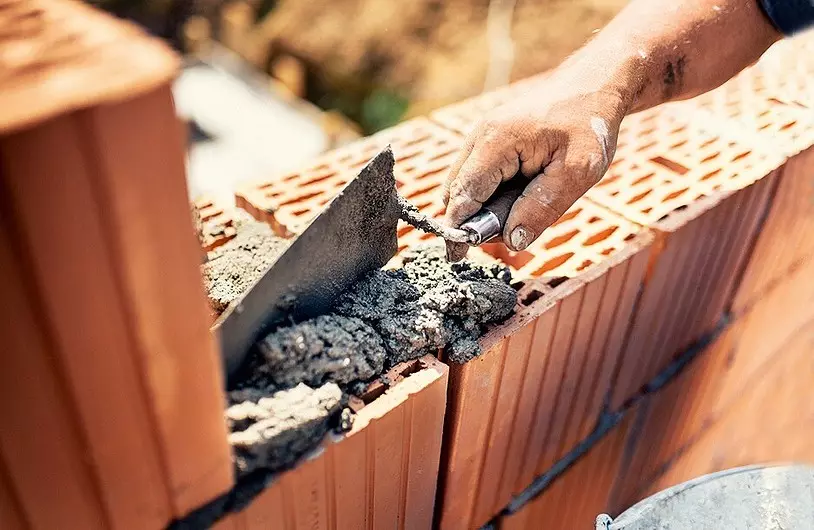
Designs from ceramic crowded blocks are easier, but losing sound insulation.
Plasterboard
Plasterboard design practically does not load overlap, does not require time-consuming plastering and allows you to be laid wires and pipes without any problems.

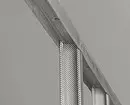
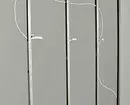

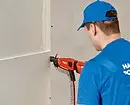
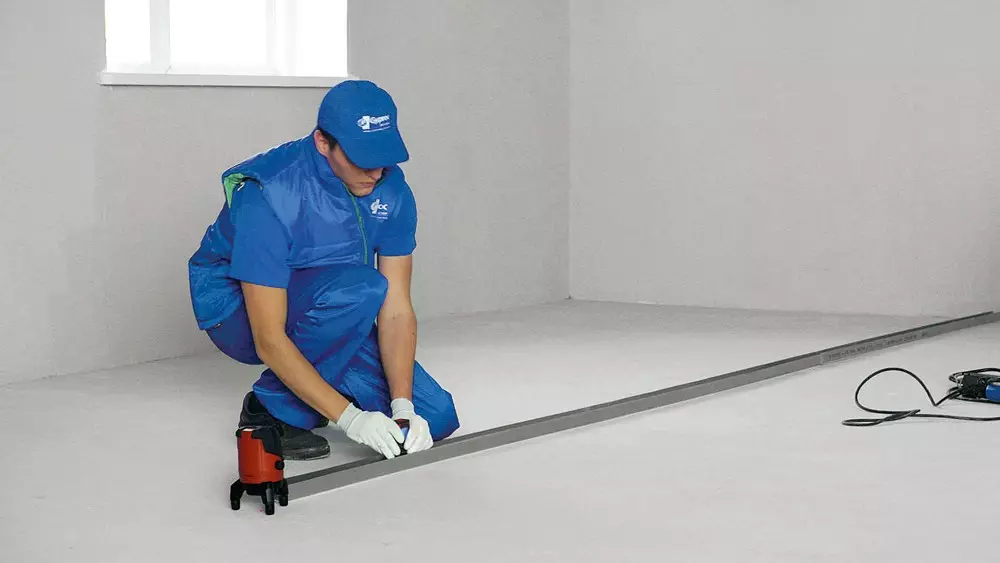
The assembly of the standard partition from GOC is starting from the installation of guide profiles; them, as well as racks are most conveniently aligned with laser devices. Photo: Saint-Gobain
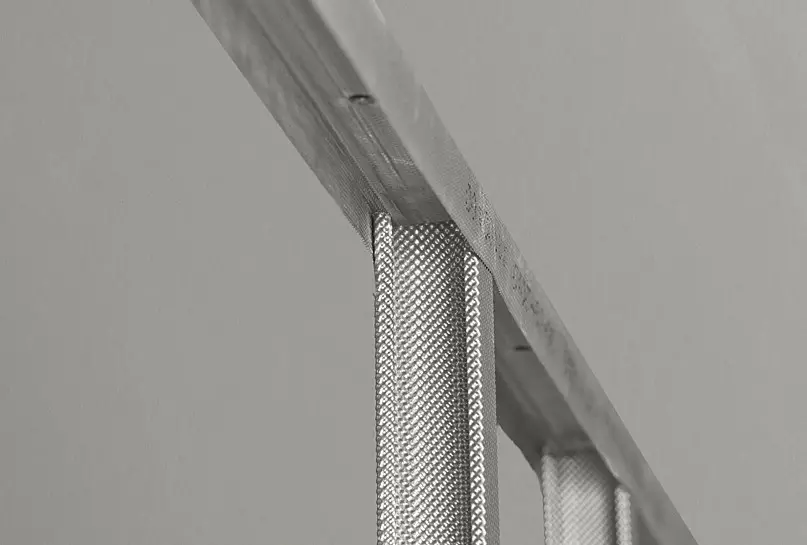
GyProck Ultra profiles with a corrugated surface in many cases are not required to fasten with self-draws. Photo: Saint-Gobain
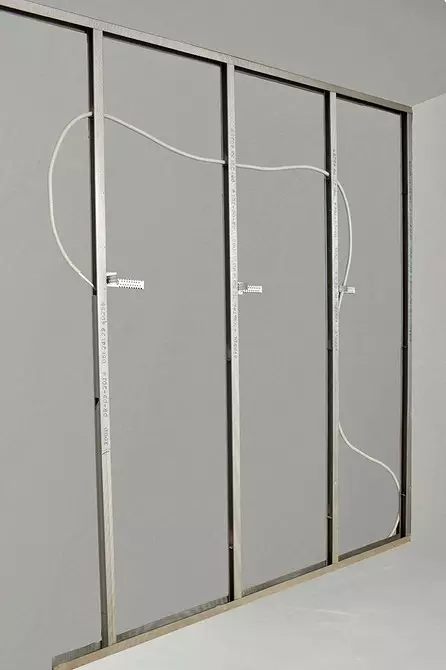
The assembled frame is crucified on the one hand, and then pave communications. Photo: Saint-Gobain
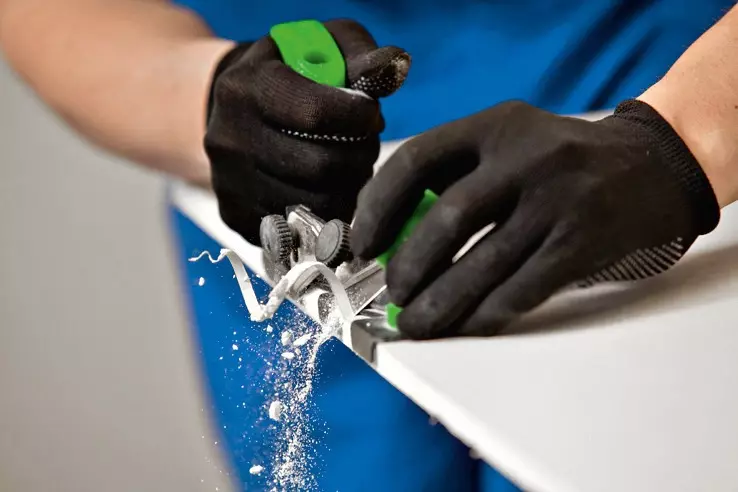
The chamdes for the shp can remove the special placle. Photo: Saint-Gobain
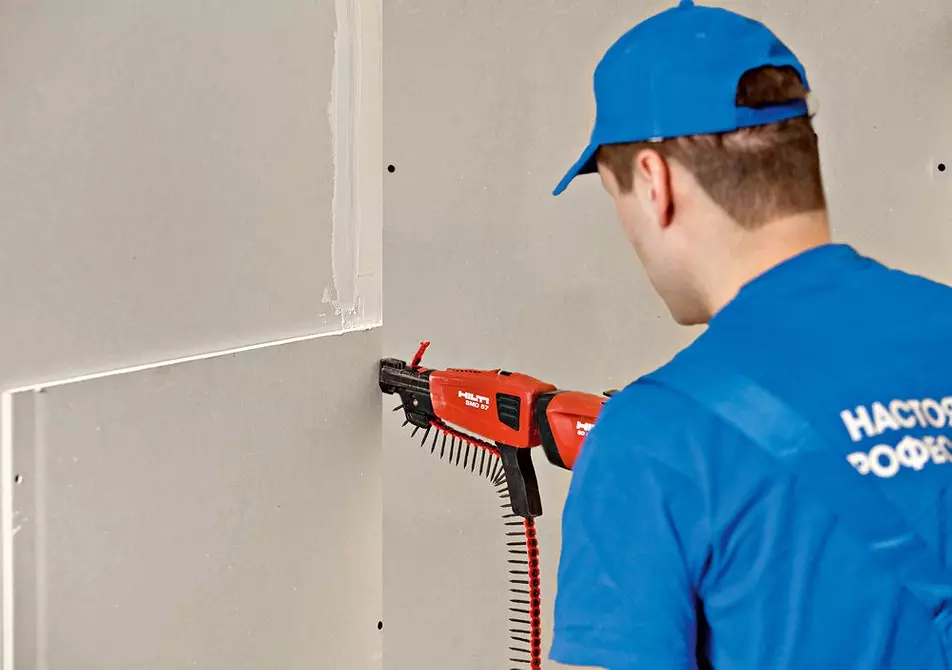
Installation of GLC will facilitate screwdriver with ribbon feed of screws. Photo: Saint-Gobain
In recent years, when assembling carcases of plasterboard structures, instead of the usual attachment, self-assembly uses the spin: a special tool resembling mites, make a hole with bent edges in two contacting walls of profiles. The fixation of the rod accelerates the installation, besides, there are no protruding ships of screws on the frame, and the leaf of plasterboard lies on it perfectly smoothly. However, when attaching the rods, it is difficult to correct errors, besides, it is less durable, so it is important to comply with the desired step of the screws - 250 mm.
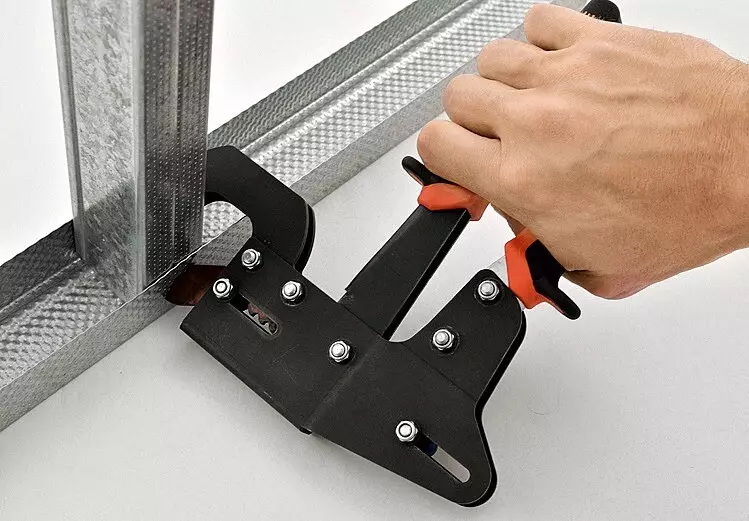
Legal Reference Memo
Reference must be previously coordinated with the bodies of the housing inspection. If the project calculation shows an increase in the load on the overlap, then the permission will be difficult, as the technical conclusion of the designer of the house will be required.
- Redevelopment that affects the bearing walls or unloading non-carrying partitions can be started only after receiving permission from the living inspection organs.
- When rewriting, it is impossible to increase the load on the overlap over the permissible on the project (calculation of the bearing ability, by deformations).
- Considerate the replacement of the partition on a more difficult hard.
- Will not resist the redevelopment at which your bathroom will turn out to be above the kitchen or apartment apartment below. This rule also works to improve apartments in monolithic new buildings, where new walls of wet areas are elevated by a floor plan.
How to prevent errors when installing
A common error in the device of interroom partitions is their improper location. The owner of the apartment may incorrectly appreciate the size of the room (for example, a dressing room), the architect is not to understand the wishes of the customer, the foreman is incorrectly read the plan, workers - see "not the label". The wall has to disassemble and build anew, time is lost and costs increase. Therefore, the owner of the apartment together with the architect (designer) is extremely desirable, armed with a plan and tape measure, come to the object to control the laying of the first rows.
| Material | Brick full-length red | Brick slotted red | Plotted ceramic block | Block gas concrete | Block hollow ceramzitobetone | PGP hydrophobized |
|---|---|---|---|---|---|---|
| Minimal possible partition thickness, mm | 65 (brick on the edge) | 120. | 80. | fifty | 90. | 80. |
| Optimal thickness of the interroom partition, mm | 120 (in Polkirpich) | 120. | 120. | 100 | 120. | 100 |
| Masonry solution | Cement-sand grade is not lower than M200 | Cement-sand grade is not lower than M200 | From the finished cement mixture, such as Porotherm | From the finished cement mixture (KNAUF LM2, Blottar Fix, etc.) | Cement-sand grade is not lower than M200 | Ready Gypsum (Knauf-Perlfix, "Montage Montage", "Ivesyl-Plast", etc.) |
| Density, kg / m3 | 1600-1900 | 1000-1400 | 750-900 | 400-600 | 950-1000 | 1100-1250 |
| Water absorption,% | 6-14. | 6-14. | 14-18. | fifty | 10 | 6-8 |




